 |
King of Chemicals Manufacturers |
Specifications, Properties, Uses, SDS of Chlorobutanol Hemihydrate Anhydrous USP NF BP Ph Eur EP JP Grade Manufacturer Supplier Exporter Wholesale & Small Packs, CAS Number 6001-64-5 and 57-15-8. |
|
| King of Chemicals has several associated companies having accreditations like cGMP, GLP - FDA Approved Good Manufacturing Practice and Good Laboratory Practice of WHO standard, ISO-9001, ISO-14001, ISO/IEC 17025, ISO ISO-45000, HACCP, FSSC 220000, FSSAI, "REACH" Registered, Kosher & Halal Certified. e-CTD and DMF support can be made available if needed. We offer USP NF BP Ph Eur EP IP JP Analytical Reagent FCC Food Grade Chemicals & Nutraceuticals. | |
        |
|
Muby Chem Pvt. Ltd. is a several decades old group of companies, engaged in manufacturing, supplying, distributing, wholesale supplies of Chlorobutanol Hemihydrate Anhydrous for actual users, including retail or small pack supplies for research and development work.
We supply fine and speciality chemicals, pharmaceutical excipients, mineral fortifiers in chemically pure, analytical reagent grade, IP BP USP Ph Eur EP JP and other pharmaceutical grade monograph including FCC Food grade chemicals and Nutraceuticals at best prices. We and/or our associated units have all the facilities to supply as per cGMP standard observing good manufacturing practice and good laboratory practice. We can assure low microbial count and also offer a test certificate for the same. We maintain warehouses across USA, India, and UAE. Our group exports to USA, Canada, Mexico, Argentina, Brazil, Chile, Korea, Malaysia, Thailand, Indonesia, Europe, and several other parts of the world. We supply in wholesale container loads to small pack of few grams. Solid products may be specified for it size and shape as desired by the buyer.


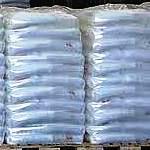
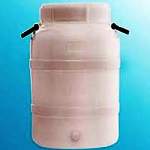
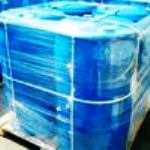
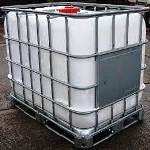
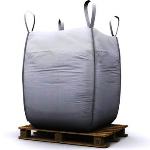
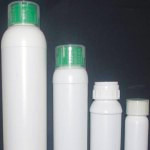
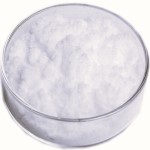
Chlorobutanol Hemihydrate Anhydrous CAS Number 6001-64-5 and 57-15-8
For Properties Specifications Uses of Chlorobutanol Hemihydrate Anhydrous Click Properties, Specifications, Uses, Price, Process of Chlorobutanol Hemihydrate Anhydrous Manufacturer.
For For SDS MSDS Sheet of Chlorobutanol Hemihydrate Anhydrous Click SDS Safety Data Sheet MSDS Sheet of Chlorobutanol Hemihydrate Anhydrous Manufacturer.
The Properties, Specifications, Monograph and Uses of Chlorobutanol Hemihydrate Anhydrous:
Chlorbutol or Chlorobutanol has preservative as well as antibacterial and antifungal activity. It is used for treatment of impacted ear wax. It is used as is a preservative, sedative, hypnotic and weak local anesthetic.
Chlorobutanol Hemihydrate BP Ph Eur Grade Specifications
C4H7Cl3O,½H2O --- 186.5 --- CAS 6001-64-5
Action and use: Disinfectant preservative.
DEFINITION
1,1,1-Trichloro-2-methylpropan-2-ol hemihydrate.
Content: 98.0 per cent to 101.0 per cent (anhydrous substance).
CHARACTERS
Appearance: White or almost white, crystalline powder or colourless crystals, sublimes readily.
Solubility: Slightly soluble in water, very soluble in ethanol (96 per cent), soluble in glycerol (85 per cent).
Melting point: About 78C (without previous drying).
IDENTIFICATION
A. Add about 20 mg to a mixture of 1 mL of pyridine and 2 mL of strong sodium hydroxide solution. Heat in a water-bath and shake. Allow to stand. The pyridine layer becomes red.
B. Add about 20 mg to 5 mL of ammoniacal silver nitrate solution and warm slightly. A black precipitate is formed.
C. To about 20 mg add 3 mL of 1 M sodium hydroxide and shake to dissolve. Add 5 mL of water and then, slowly, 2 mL of iodinated potassium iodide solution. A yellowish precipitate is formed.
D. Water (see Tests).
TESTS
Solution S: Dissolve 5 g in ethanol (96 per cent) and dilute to 10 mL with the same solvent.
Appearance of solution: Solution S is not more opalescent than reference suspension and not more intensely coloured than reference solution.
Acidity: To 4 mL of solution S add 15 mL of ethanol (96 per cent) and 0.1 mL of bromothymol blue solution. Not more than 1.0 mL of 0.01 M sodium hydroxide is required to change the colour of the indicator to blue.
Chlorides: Maximum 100 ppm.
Water: 4.5 per cent to 5.5 per cent, determined on 0.300 g.
Sulfated ash: Maximum 0.1 per cent, determined on 1.0 g.
ASSAY
Dissolve 0.100 g in 20 mL of ethanol (96 per cent). Add 10 mL of dilute sodium hydroxide solution, heat in a water-bath for 5 min and cool. Add 20 mL of dilute nitric acid, 25.0 mL of 0.1 M silver nitrate and 2 mL of dibutyl phthalate and shake vigorously. Add 2 mL of ferric ammonium sulfate solution and titrate with 0.1 M ammonium thiocyanate until an orange colour is obtained. 1 mL of 0.1 M silver nitrate is equivalent to 5.92 mg of C4H7Cl3O.
Specifications of Chlorobutanol USP NF Grade:
C4H7Cl3O (anhydrous) --- 177.46
2-Propanol, 1,1,1-trichloro-2-methyl-.
1,1,1-Trichloro-2-methyl-2-propanol --- CAS 57-15-8.
Hemihydrate --- 186.46 --- CAS 6001-64-5.
Chlorobutanol is anhydrous or contains not more than one-half molecule of water of hydration. It contains not less than 98.0 percent and not more than 100.5 percent of C4H7Cl3O, calculated on the anhydrous basis.
Packaging and storage: Preserve in tight containers.
Labeling: Label it to indicate whether it is anhydrous or hydrous.
Identification:
A: Infrared Absorption.
B: To 5 mL of a freshly prepared solution (1 in 200) add 1 mL of 1 N sodium hydroxide, then slowly add 3 mL of iodine: a yellow precipitate of iodoform, recognizable by its odor, appears.
Reaction: Shake thoroughly 0.5 g with 25 mL of water: the water remains neutral to litmus.
Water: not more than 1.0% (anhydrous form) and not more than 6.0% (hydrous form).
Chloride: To a solution of 0.50 g in a mixture of 25 mL of diluted alcohol and 1 mL of nitric acid add 2 mL of silver nitrate: any turbidity produced is not greater than that produced from a control solution containing 0.50 mL of 0.020 N hydrochloric acid in place of the Chlorobutanol (0.07%).
Assay:
Denatured alcohol: Dilute 100 mL of isopropyl alcohol to 1000 mL with alcohol.
Potassium hydroxide solution: Transfer 58 g of potassium hydroxide to a 1000-mL volumetric flask. Add 100 mL of water to dissolve, then cool the solution. Dilute with Denatured alcohol to volume, and mix. Prepare fresh just prior to use.
Procedure: Transfer about 100 mg of Chlorobutanol, accurately weighed, to a glass-stoppered, flat-bottomed boiling flask. Add 50 mL of Potassium hydroxide solution, attach the flask to a reflux condenser, and reflux for 1 hour. Allow the flask to cool while still attached to the condenser, then add 100 mL of water, using a portion of the water to rinse the condenser and its tip. Add 15 mL of nitric acid while stirring. Titrate with 0.1 N silver nitrate, determining the endpoint potentiometrically, using a silver-billet combination electrode, consisting of a metallic silver indicator electrode and a double junction reference electrode that allows use of a nonchloride filling solution (such as ammonium nitrate solution) for determining chloride, or equivalent. Perform a blank determination and make any necessary correction. Each mL of 0.1 N silver nitrate is equivalent to 5.915 mg of C4H7Cl3O.
Chlorobutanol Hemihydrate EP and JP Grade is also offered.
The MSDS-SDS Hazard Statement of Chlorobutanol Hemihydrate Anhydrous:
Chlorbutol or Chlorobutanol SDS, Safety Data Sheet
MSDS, Material Safety Data Sheet 11-Feb-25
1. Product Identification
Product Name & Other Names: Chlorbutol or Chlorobutanol or 1,1,1-Trichloro-2-methyl-2-propanol Hydrochloride.
CAS Number: 57-15-8 and 6001-64-5 for hemihydrate
EINECS EC Number: 200-317-6 and 249-042-3 for hemihydrate
Relevant uses and uses advised against (if any): Industrial Manufacturing.
Suppliers: As per letterhead.
2. Hazards Identification
GHS, Globally Harmonized System Classification in accordance with 29 CFR 1910
Classification according to Regulation (EC) No 1272/2008
Acute toxicity, oral Category 4, H302
Skin corrosion/irritation Category 2, H315
Serious eye damage/eye irritation Category 2A, H319
Specific target organ toxicity, single exposure; Respiratory tract irritation Category 3, H335
Specific target organ toxicity, single exposure; Narcosis Category 3, H336
Labeling according to Regulation (EC) No 1272/2008
GHS Label Elements  Irritant |
Signal Words: Warning
Hazard statements:
H302: Harmful if swallowed.
H315: Causes skin irritation.
H319: Causes serious eye irritation.
H335: May cause respiratory irritation.
H336: May cause drowsiness or dizziness.
Precautionary statements:
P262: Do not get in eyes, on skin, or on clothing.
P280: Wear protective gloves/protective clothing/eye protection/face protection.
P270: Do not eat, drink or smoke when using this product.
P301+312: IF SWALLOWED: Call a POISON CENTER or doctor/physician if you feel unwell.
P302+P352: IF ON SKIN: Wash with plenty of soap and water.
P305+P351+P338 IF IN EYES: Rinse cautiously with water for several minutes. Remove contact lenses, if present and easy to do. Continue rinsing.
P332+313: If skin irritation occurs: Get medical advice/attention.
P337+P313 If eye irritation persists: Get medical advice/ attention.
3. Composition/Information on Ingredients
Product Name & Other Names: Chlorbutol or Chlorobutanol or 1,1,1-Trichloro-2-methyl-2-propanol Hydrochloride.
CAS Number: 57-15-8 and 6001-64-5 for hemihydrate.
4. First Aid Measures
Inhalation: Remove to fresh air. Give oxygen if breathing is difficult; give artificial respiration if breathing has stopped. Keep person warm and quiet; get medical attention.
Ingestion: Induce vomiting immediately as directed by medical personnel. Never give anything by mouth to an unconscious person.
Skin Contact: Immediately flush skin with plenty of soap and water for at least 15 minutes. Remove contaminated clothing and shoes. Wash clothing before reuse. Get medical attention if irritation develops.
Eye Contact: Immediately flush eyes with plenty of water for at least 15 minutes, lifting upper and lower eyelids occasionally. Remove contact lenses, if present and easy to do. Get medical attention.
5. Fire Fighting Measures
Fire: Not considered to be a fire hazard but it can burn at higher temperatures.
Fire Extinguishing Media: Use water spray, alcohol-resistant foam, dry chemical or carbon dioxide.
Special hazards arising from the substance or mixture: Carbon oxides, Hydrogen chloride gas and Toxic fumes.
Special Information: In the event of a fire, wear full protective clothing and NIOSH-approved self-contained breathing apparatus with full face piece.
6. Accidental Release Measures
Personal precautions, protective equipment and emergency procedures: Avoid dust formation. Avoid breathing dust/fumes/gas/mist/vapors/spray. Ensure adequate ventilation. Use individual protective equipment (waterproof boots, suitable protective clothing, safety glasses, etc.).
Environmental precautions: Do not let the product enter drains, soil or water sources.
Methods and materials used for containment Cleanup procedures and Storage: Contain spilled material. Cover with an inert, non-combustible absorbent material, (e.g. sand, earth, diatomaceous earth, vermiculite). Vacuum or sweep-up and remove to an approved disposal container.
7. Handling and Storage
Precautions for safe handling: Apply according to good manufacturing and industrial hygiene practices. Ensure proper ventilation. Wash thoroughly after handling. Do not drink, eat or smoke while handling. Avoid contact with skin, eyes and clothing. Minimize dust generation. Handling is performed in a well-ventilated place. Wear suitable protective equipment. Avoid breathing dust/fumes/gas/mist/vapors/spray. Keep container tightly closed. Avoid ingestion and inhalation. Use individual protective equipment (waterproof boots, suitable protective clothing, safety glasses, etc.).
Conditions for safe storage, including any incompatibilities: Store in cool, dry and ventilated area away from heat sources and protected from sunlight in tightly closed original container. Keep air contact to a minimum. Do not leave the material container open. Store protected from heat, sparks and ignition sources and incompatible materials. Avoid inhalation of dust/mist/vapor. Do not store with incompatible materials like strong oxidizing agents, acids, acid chlorides, acid anhydrides. Avoid dust formation and control ignition sources. Containers of may be hazardous when empty.
8. Exposure Controls/Personal Protection
Airborne Exposure Limits: None established. Ensure adequate ventilation. Use process enclosures, local exhaust ventilation, or other engineering controls to keep airborne levels low.
Ventilation System: A system of local and/or general exhaust is recommended to keep employee exposures as low as possible.
Personal Respirators (NIOSH Approved): For conditions of use where exposure to dust or mist is apparent and engineering controls are not feasible, a particulate respirator may be worn.
Skin Protection: Wear protective gloves and clean body-covering clothing.
Eye Protection: Use chemical safety goggles and/or full face shield where dusting or splashing of solutions is possible. Maintain eye wash fountain and quick-drench facilities in work area.
Other Control Measures: Maintain good housekeeping in work area. Handle in accordance with good industrial hygiene and safety practice.
9. Physical and Chemical Properties
Appearance: Colorless to white crystals.
Odor: Camphor like odor.
Odor threshold: No information found.
pH: No information found.
Relative density: No information found.
Melting Point: 97 to 99C literature
Initial boiling point and boiling range: 167C literature.
Flash point: No information found.
Auto-ignition temperature: No information found.
Decomposition temperature: No information found.
Upper/lower flammability or explosive limits: No information found.
Vapor pressure: No information found.
Vapor density: No information found.
Evaporation rate: No information found.
Flammability (solid, gas): No information found.
Partition coefficient: n-octanol/water: No information found.
Solubility: Soluble in water. Soluble in alcohol and glycerol, ether, chloroform.
Viscosity: No information found.
10. Stability and Reactivity
Stability: Stable under ordinary conditions of use and storage. Hygroscopic.
Hazardous Decomposition Products: May produce Carbon oxides, Hydrogen chloride gas and Toxic fumes when heated to decomposition.
Hazardous Polymerization: Will not occur.
Incompatibilities: Strong oxidizing agents, acids, acid chlorides, acid anhydrides.
Conditions to Avoid: Heat, flame, moisture, ignition sources, dusting and incompatibles.
11. Toxicological Information
LD50 oral rat: 510 mg/kg.
LD50 dermal rat: >2000 mg/kg.
Carcinogenic Effects: Not a reported carcinogen by IARC, NTP, ACGIH, OSHA.
Mutagenic Effects: No information found.
Reproductive Effects: No information found.
Developmental Effects: No information found.
Teratogenicity: No information found.
12. Ecological Information
Toxicity to fish: No information found.
Persistence and Degradability: Soluble in water Persistence is unlikely.
Bioaccumulation/ Accumulation: No information found.
Mobility: Will likely be mobile in the environment due to its water solubility.
Results of PBT and vPvB assessment: No information found for assessment.
13. Disposal Considerations
Whatever cannot be saved for recovery or recycling should be managed in an appropriate and approved waste disposal facility.
14. Transport Information
DOT USA: Not dangerous goods.
TDG: Not dangerous goods.
IATA: Not dangerous goods.
IMDG/IMO: Not dangerous goods.
ADR/RID Europe: Not dangerous goods.
15. Regulatory Information
USA:
SARA 311/312 Hazardous Categorization: See section 2.
California Proposition 65: Not listed.
16. Other Information
Disclaimer:
**************************
Our company provides this MSDS sheet in good faith but makes no representation as to its comprehensiveness or accuracy. This SDS sheet is intended only as a guide to the appropriate precautionary handling of the material by a properly trained person using this product. The above information has been compiled from various sources and has the possibility of discrepancy and being out-dated information. Individuals receiving the information must exercise their independent judgment and do further search in determining its appropriateness for a particular purpose. In no case shall our company be liable to loss or damages by the product user.
**************************

Chlorobutanol Hemihydrate Anhydrous Manufacturers, Suppliers, Exporters, Wholesalers:
King of Chemicals manufacturers

Plot No. 2900/46&47 + 2900/163to167, GIDC, Ankleshwar, Dist. Bharuch, India
India, USA, UAE
TEL: (Office) 91-22-23774610, 91-22-23723564
e-mail: info@kingofchemicals.com
Copyright and Usual Disclaimer is Applicable --- March 24, 2025
If I give you “My Word” Nobody can undo it.
If I sign an “Agreement” my Lawyer will undo it
Our products are for industrial and laboratory use only. The user must test the material before use. We are not dispensing chemists or druggist and do not offer over the counter type (OTC) products for medical use by individuals.
We and our associates manufacture pure chemicals surpassing Monograph Specifications of Analytical Reagent Standards, British & European Pharmacopoeia BP Ph Eur EP Standard, US Pharmacopoeia USP NF Standard, Indian Pharmacopoeia IP Standard, Japan Pharmacopoeia JP Standard, FCC Food Grade Standard. |
|